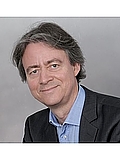Development of anti-infective and bioactive films for wound healing applications
Projektleiter:
Projektbearbeiter:
Dr. rer. nat. Christian Willems
Finanzierung:
Chronic wounds represent wounds that fail to undergo a controlled healing process that leads to "restitutio ad integrum” to restore functional and anatomical integrity of injured tissues [Lazarus 1994]. The normal wound healing process is characterized by four timely and locally orchestrated processes including hemostasis, inflammation, cell proliferation and tissue remodeling [Lazarus 1994]. These steps involve many different cell types derived from blood (e.g. platelets, monocytes/macrophages, lymphocytes) and tissue cells (fibroblasts, endothelial cells, keratinocytes), but also extracellular matrix proteins, proteoglycans and hyaluronic acid, and metallo matrix proteinases [Chen 1999].Chronic wounds arise for different reasons and often as reaction to disease, such as diabetes, venous disease, arterial disease, neurological conditions or severe injury (e.g. burns, trauma, surgery). Diabetic foot wounds, venous and pressure ulcers account for approximately 90% of chronic wounds (Roehrs et al. 2016) and represent not only a serious health problem for the patients but also a considerable burden for the health care systems. Management of chronic wounds involves a variety of wound dressing with aims including maintenance of a moist healing environment (e.g. films, foam, hydrocolloids, alginates, hydrogel), reduction in bacterial load and infection (e.g. dressings containing silver or iodine) or dressings aiming to support healing that contain collagen, cellulose and other factors (Roehrs et al. 2016). A recent review from Han & Ceilley summarizes pros & cons of existing wound dressing materials [Han & Ceilley 2017]. Wound dressings can be prepared by a variety of techniques, such as the use of fibrous non-woven sheets or fleeces prepared by conventional textile technologies but also electrospinning, further membranes and films prepared by solvent-based technique of foams by thermal phase inversion techniques. A new emerging technique could be the layer-by-layer technique that is based usually on the complexation of so-called polyelectrolytes on solid surfaces [Decher 1997]. Polysaccharides with charged carboxylic groups such as alginate or hyaluronan represent polyanions, while chitosan resents a polycation in aqueous solutions if the pH value is below pH 6. The LbL technique has the advantage that the layer-wise preparation permits the combination of different polyelectrolytes in one and the same film (blending) or provided a certain thickness also uploading of bioactive factors can be achieved that provide a complex microenvironment to cells guiding cell adhesion and function in several ways. Recently the group of Mano could demonstrate that such multilayer films can be also prepared as free-standing films provided they have a certain thickness of more than 100 µm that is achieved when about 100 double layers have been assembled [Gomes et al. 2018]. So, far no studies exist to transfer these technique to the preparation of wound dressings.
Kooperationen im Projekt
Publikationen
Die Daten werden geladen ...
Kontakt

Prof. Dr. habil. Thomas Groth
Martin-Luther-Universität Halle-Wittenberg
Naturwissenschaftliche Fakultät I
Heinrich-Damerow-Str. 4
06120
Halle (Saale)
Tel.:+49 345 5528460
weitere Projekte
Die Daten werden geladen ...


